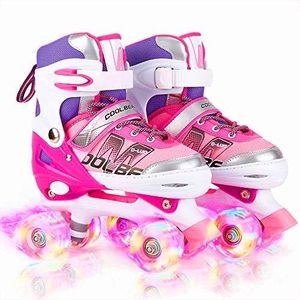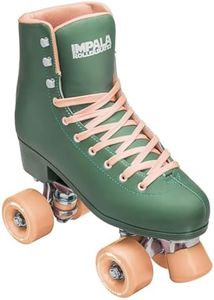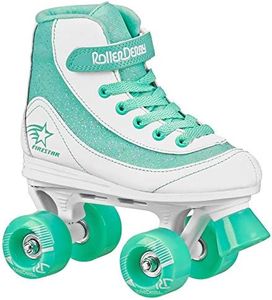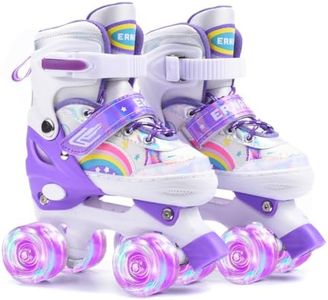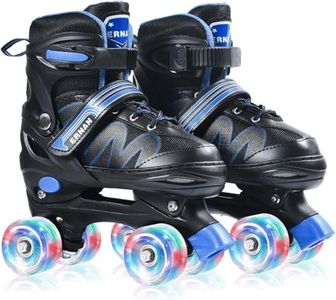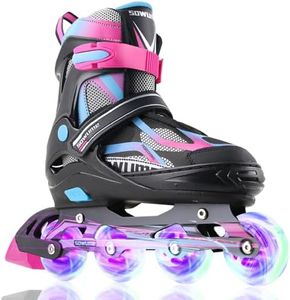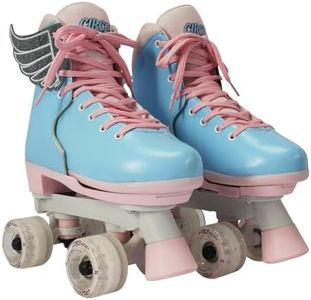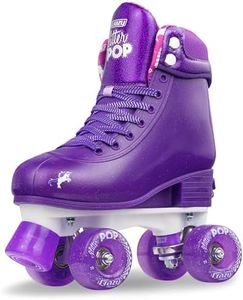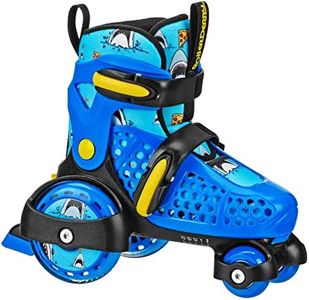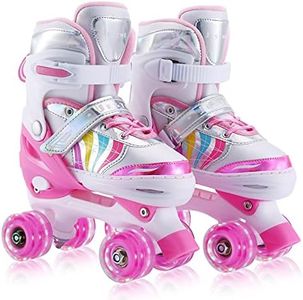We Use CookiesWe use cookies to enhance the security, performance,
functionality and for analytical and promotional activities. By continuing to browse this site you
are agreeing to our privacy policy
10 Best Roller Skates For Kids
From leading brands and best sellers available on the web.Buying Guide for the Best Roller Skates For Kids
Choosing roller skates for kids can be an exciting process, as it's about ensuring both fun and safety for young skaters. The right pair of skates gives a child confidence while helping them learn, enjoy outdoor activity, and develop balance. Your main goal should be to find skates that offer a good fit, comfort, and safety features, as well as durability to stand up to active use. Since kids grow and their skills improve quickly, it's important to consider adjustability and support to get the longest use out of a pair.Size and AdjustabilitySize refers to how well the roller skates fit your child's feet. It's important because an incorrect size can lead to discomfort, cause blisters, and even pose a risk of injury. Many kids' roller skates come in adjustable sizes, which means the skate size can grow along with your child's feet. These skates typically have a simple mechanism that allows you to lengthen or shorten the boot. When deciding, check if the child is in between sizes or likely to grow soon; adjustable skates are typically grouped into ranges (like size 1–4 or 3–6) and can be a great solution to maximize usage time.
Closure SystemThe closure system is how you secure the roller skate onto the foot, and it's important for safety and comfort. Common types include traditional laces, Velcro straps, and buckles. Laces offer the most customized fit but can be tricky for younger kids to handle alone. Velcro and buckles are easier for quick adjustments and more independence. For younger children just learning, a simple system (Velcro or buckle) promotes confidence, whereas older or more skilled skaters may prefer laces for a tighter, more controlled fit.
Wheel Type and HardnessWheels on kids' roller skates differ in material and hardness. This spec matters because it impacts grip, speed, and how smooth the ride feels. Softer wheels (often with lower durometer numbers, like 78A–82A) grip better and absorb shocks, which is ideal for indoor rinks or rough outdoor surfaces. Harder wheels roll faster and are better for smooth, flat surfaces. Beginners will usually do better with softer wheels for stability and comfort until they've gained confidence and control.
Boot Style and SupportBoot style affects the level of ankle support and overall comfort. High-top boots provide extra support, which is especially important for young or beginner skaters to prevent ankle rolls and give a feeling of stability. Low-top boots offer more flexibility for turning and maneuvering, which can be appealing to more experienced or older kids. New skaters or those needing extra support should opt for high-top styles, while those advancing their skills might experiment with lower cuts for more freedom of movement.
Brake TypeMost children's roller skates come with a heel brake, usually located on one or both skates. This spec is important as it helps kids stop safely and easily, especially when they're still learning. Beginners should always use skates with a built-in brake, as learning to stop is a crucial early skill. As kids get more experienced, they might explore other options, but for most young skaters, a simple heel brake is best.
BearingsBearings are the small components inside each wheel that impact how smoothly and quickly the wheels spin. For beginners and young children, it's more important for skates to roll smoothly rather than being extra fast. Skates for kids usually come with basic bearings that keep speeds manageable. Unless your child is a more advanced skater wanting more speed (which is less common for younger kids), basic, smooth-rolling bearings are appropriate and safest.
Padding and ComfortThe inside padding of roller skates affects how comfortable they feel during use. More padding can prevent rubbing and blisters, and makes learning to skate more enjoyable. Look for skates with cushioned liners, especially if your child will be skating for longer periods. Each child is different—if your child has sensitive feet or will use the skates often, prioritizing extra comfort is worthwhile.
